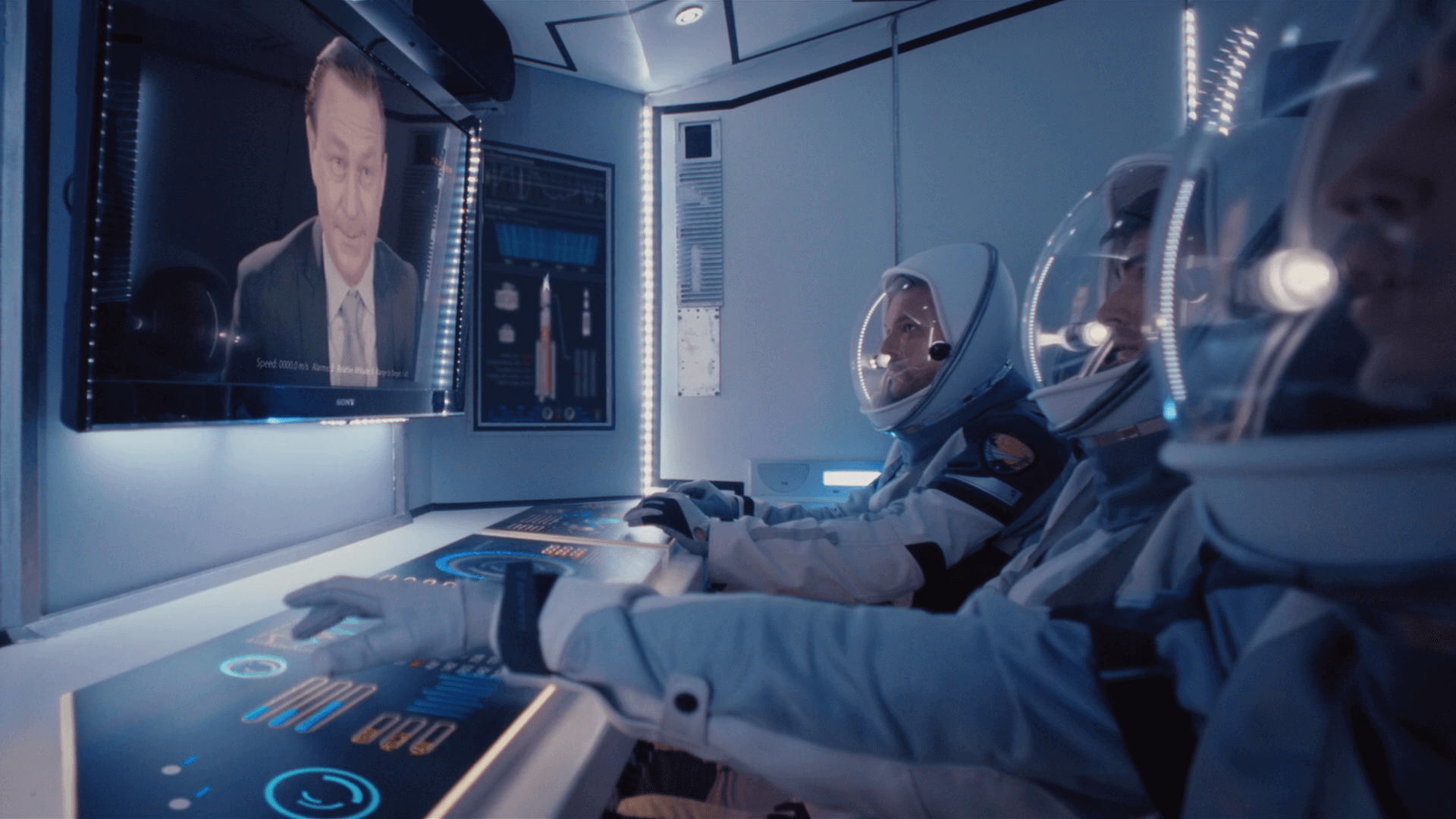400 Days [2015], a film by Matt Osterman, has the ingredients for a great independent film. A small cast, a small setting and a big idea. Four soon to be astronauts are trapped in a simulated spaceship environment for (you guessed it) 400 days to test how they cope. The concept had me interested from the off. I’ve always been a huge fan of intimate Dr Who bottle episodes which play out very similarly to 400 Days. Sadly for it, a great concept does not equate to a great film.
400 cuts. Quite frankly, 400 Days is riddled with poor editing. Most modern films will either have unremarkable editing or better, it is rare for one to have flat out poor and, at worst, incomprehensible editing. Many cuts don’t match action. One shot may cover someone scratching their head but then cut to that same moment from another angle where their hands are nowhere near their head. This breaks the illusion of film and grounds my suspension of disbelief. As the film progresses, the film cuts far too much, never allowing your eyes to fully settle on a shot. An over-reliance on close-ups coupled with the fast cuts make action scenes utterly unintelligible blurs and shakes.
And then there were some. It should be noted that the four leads perform the best they can despite inconsistent and, for some, shallow characters. Dane Cook and Ben Feldman play the two more interesting characters with the meatier roles. Their characters are more affected by the isolation than Brandon Routh and Caity Lotz’s characters whose only consistent traits seem to be that they once dated and that they are both good at their jobs. It’s a shame seeing as some of the interesting psychological horror elements seemed to somehow relegate themselves to becoming sci-fi cliches meaning the cast and characters have less to dig into.
Table for four. The set design varies greatly. While some of the simulation rooms lack any great visual interest, the dining area stands out above the rest. Tending towards the centre of the frame, the symmetrical set has a Kubrickian feel to it and helps create that unease and intensity the film needs. Moreover, some of the shots within the simulated ship (especially in the low light scenes) look great and create a moody and somber tone. Some new sets are introduced later and some shine too, but many of the sets feel mismatched in tone creating a dissonance pulling me out of the film further.
Does not compute. The film takes many liberties with the logic of its own world as well as that of our own. Two major examples being that a near 350 day time jump sees little or no effect on the character’s relationships or personalities and (without spoiling too much) the decision to use helmets later in the film baffled me too. By its nature, the film is very ambiguous and I have the suspicion that the writer mistook ambiguity for complexity and this misjudged complexity for quality. While ambiguity is a powerful storytelling tool, here it achieves little and the payoff is non-existent. The film spends so much time asking questions and next to no time actually answering them.
A great concept and performances wasted on messy filmmaking.

